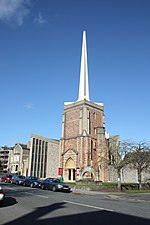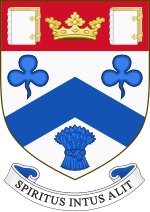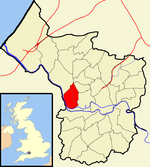The Whiteladies Picture House (grid reference ST576742) is a cinema on Whiteladies Road in Clifton, Bristol, England.
It was built in 1920–1921 by James Henry LaTrobe and Thomas Harry Weston (1870–1923) and opened by the Duchess of Beaufort on 29 November 1921. It formerly had a ballroom, billiard room and restaurant but in 1978, it became a three screen cinema rather than having a single screen.
As part of the ABC chain, the cinema was eventually absorbed by Odeon, in a merger undertaken by the private equity firm Cinven. With another Odeon nearby on Broadmead's Union Street, the decision was taken to close down and sell the Whiteladies in 2001 with a restrictive covenant forbidding its future use as a cinema.The cinema has been designated by English Heritage as a grade II listed building. While the front section of the building has been divided off to create a restaurant, the majority of the building, including the main auditorium, balcony and ballroom, remained empty since its closure in 2001 until its reopening in 2016.
The building was allowed to deteriorate and was on Bristol City Council's "at Risk" register, deeming it to be in danger of being lost due to lack of use, under-use, disrepair, or dereliction. Several plans were put forward to redevelop the building. The most recent planning application to convert the building into a gym and flats was rejected by Bristol City Council, went to appeal and was finally defeated in March 2013.In November 2010 a not-for-profit company, Whiteladies Picture House Ltd, was set up by Alan Mandel Butler and David Fells (manager of the local Redgrave Theatre) to raise awareness of the building and its history and to begin the journey of raising the necessary capital to reopen the Picture House as a mixed-use venue with a 450-seat theatre and a 200-seat cinema.The company reached out to the local community to aid in its campaign and were instrumental in blocking the planning application to convert the building into a gym and flats and bringing the building back into the public eye. In 2013, Alan Mandel Butler left the company to pursue other projects and David Fells began working with Jonathan Lees Architects to develop plans to preserve the existing historic fabric of the building, including the original Art Deco auditorium.It is currently operated by Everyman Cinemas. It is the company's first branch in Bristol and it opened on 20 May 2016. The redevelopment also includes five new flats on the upper floor, where the ballroom and billiards room used to be.In May 2022, the cinema closed for expansion into the former restaurant next door. It reopened in June with a larger foyer and a fourth, 37-seat screen.










